
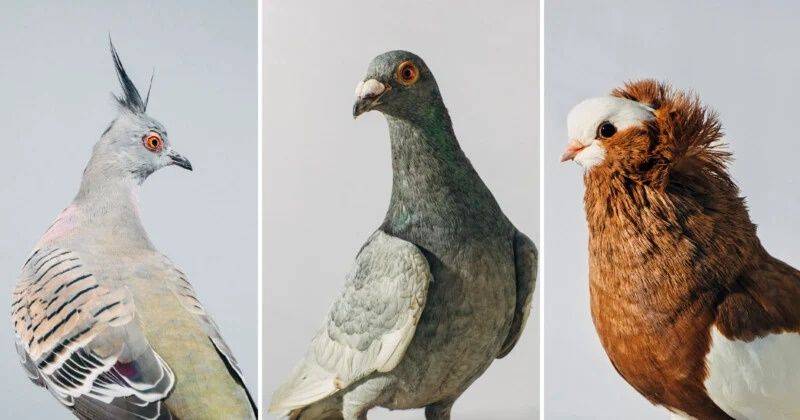
Photographer Captures Formal Portraits of ‘Misunderstood’ Pigeons
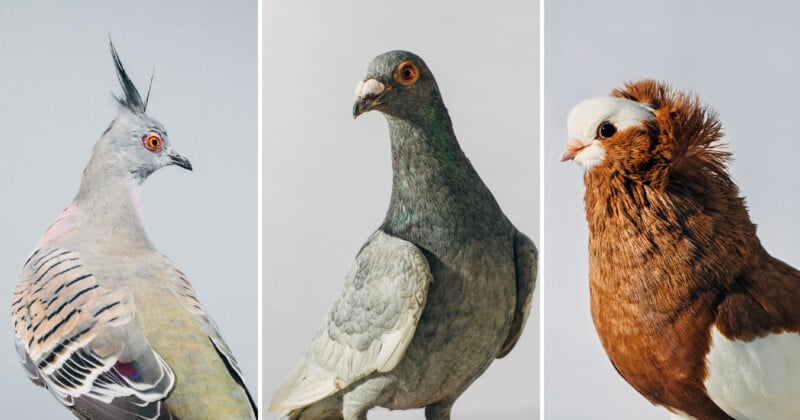
Pigeons are everywhere in the world, but the common birds are often looked down upon and dubbed “flying rats.” However, one photographer has sought to raise the profile of the lowly pigeon by taking a series of formal portraits in a studio setting.
Titled Fancy Pigeons, photographer Brendan Burden tells PetaPixel that the birds are misunderstood creatures and he has learned much about them.
“Had you asked me prior to undertaking this project, where they came from, I would have just assumed that they were wild and had some kind of symbiotic relationship with humans, like rats or mice,” he says.
“But in fact, they’re feral domesticated birds, and the reason they’re everywhere is in part because humans have been breeding them, often for nothing other than their beauty, for thousands of years.”

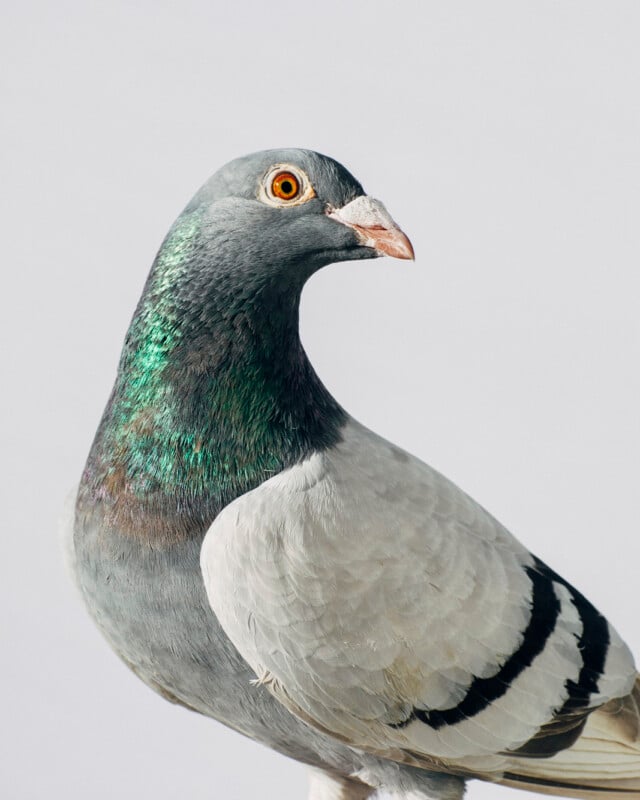
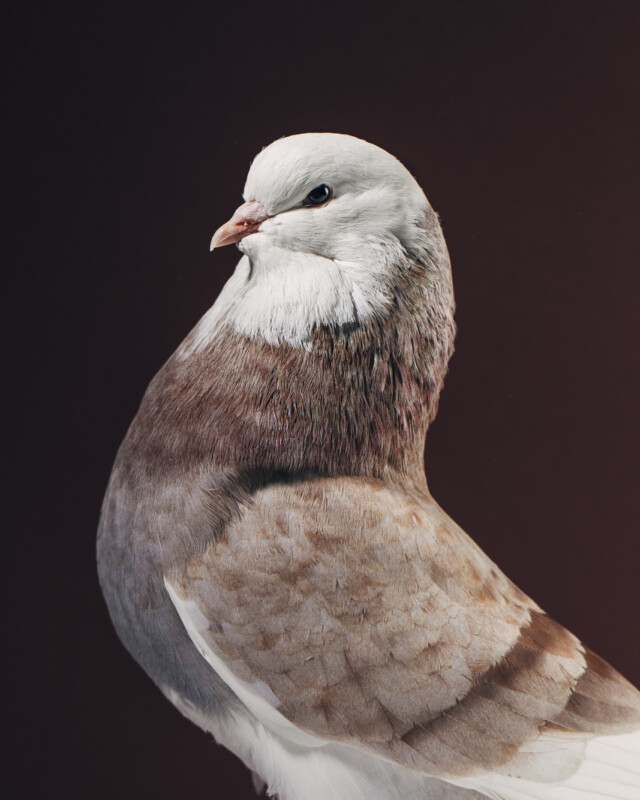
Burden says he got the idea for Fancy Pigeons after coming across a photo of a Jacobin pigeon, a stunning bird that has a feathered hood.
“I had no idea pigeons could look this way and started doing some research and came to find out that there is a wide variety of pigeons, wild and domestic, many of which are quite beautiful, and I wondered whether I could apply more formal portrait techniques to these birds,” he says.
“The juxtaposition was interesting to me. I, like most people, barely acknowledged pigeons and I certainly didn’t hold them in any high regard. So how interesting would it be to upend this view through photography?”
Capturing Pigeons
After coming into contact with the Canadian Pigeon Fancier’s Association he began traveling to pigeon keepers’ houses and experimenting with makeshift studio setups.
“A few things I didn’t realize at the beginning, was that domestic pigeons don’t really ‘escape’,” he says.
“They’re allowed to go fly outdoors, they’re not like wild birds. I also didn’t realize that they’re used to being touched and handled by their owners and are quite calm about it. So I didn’t need to go to the birds and wait for them to be where I hoped they would be. I could have them moved to where I needed them to be.”
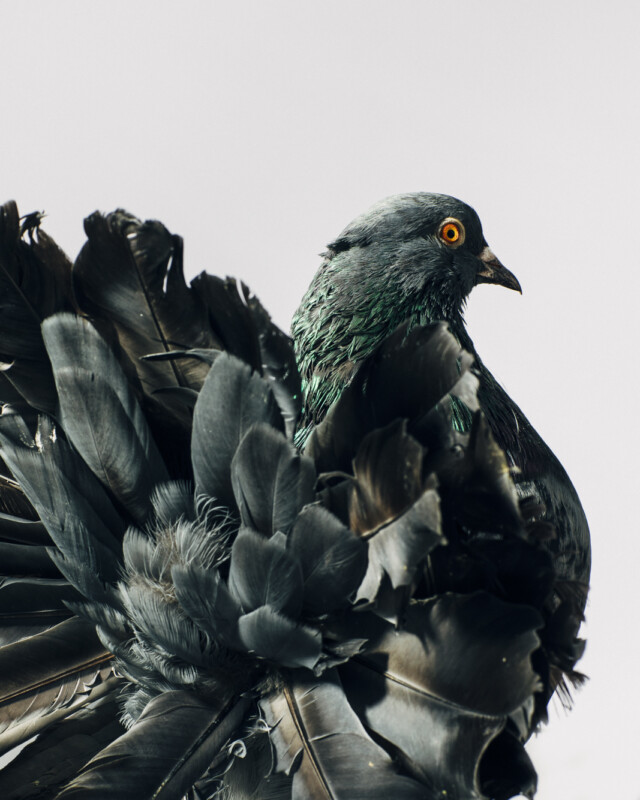
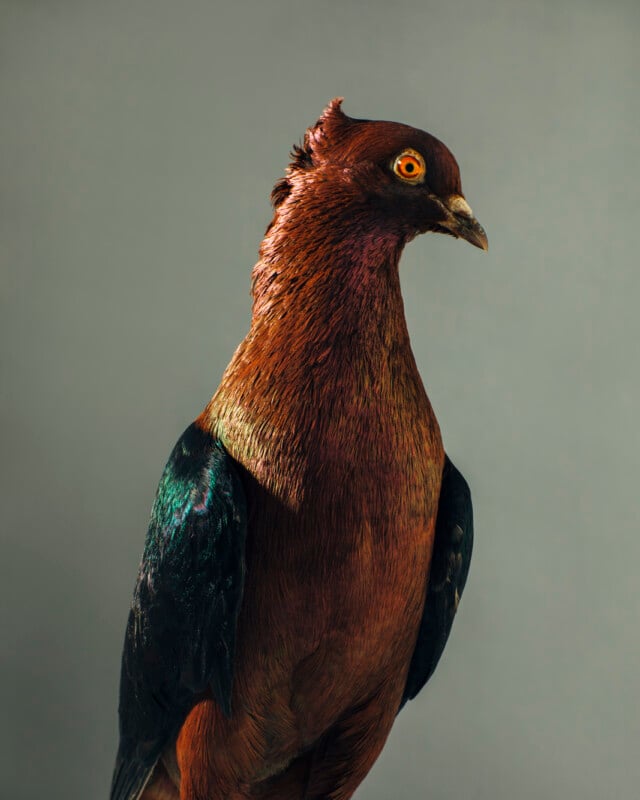
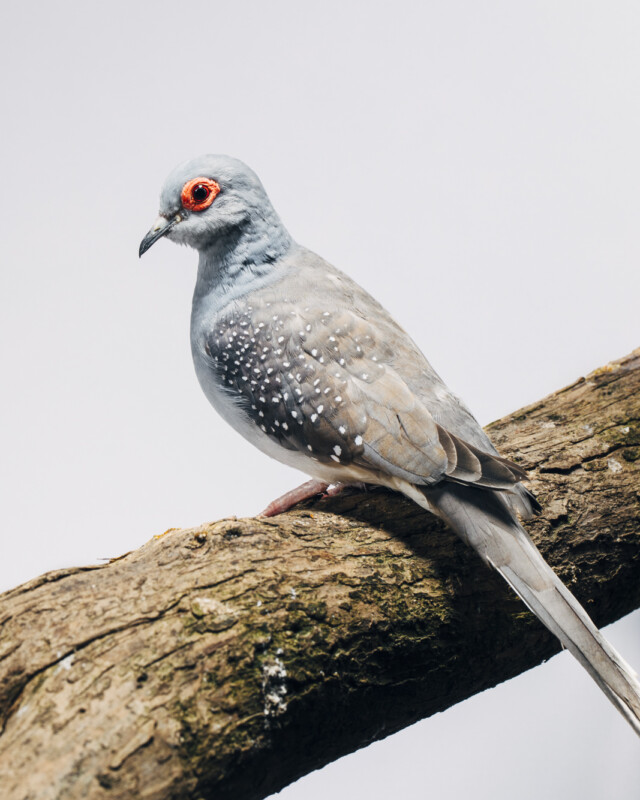
The realization that pigeons were amenable led him to build a portable studio out of a large show cage, inserting a paper background that allowed him to shoot through the swing door.
“I used strobes to actually light the portraits. Usually a 100cm deep octa as a fill, and a 7-inch reflector with a honeycomb grid in the key light,” he says.
“I’ll sometimes add a third light for the background depending on the color and the position of the pigeon, which isn’t all that predictable.
“Ideally I want some separation between the bird and the background though. The scale is interesting though, because the 7-inch reflector, which would normally create pretty hard light, is not nearly hard enough for such a small subject without the honeycomb grid. If I want any definition or drama, it’s totally necessary for such a small subject.”
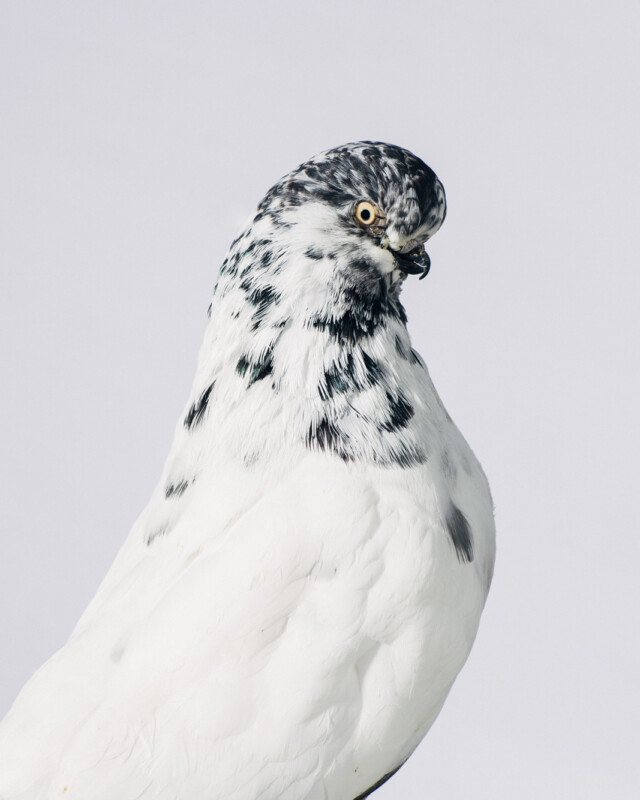
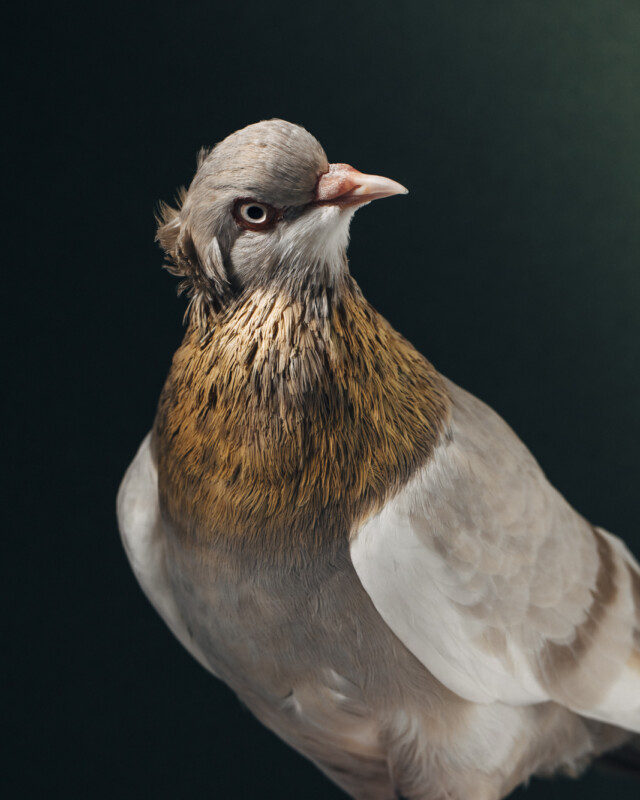
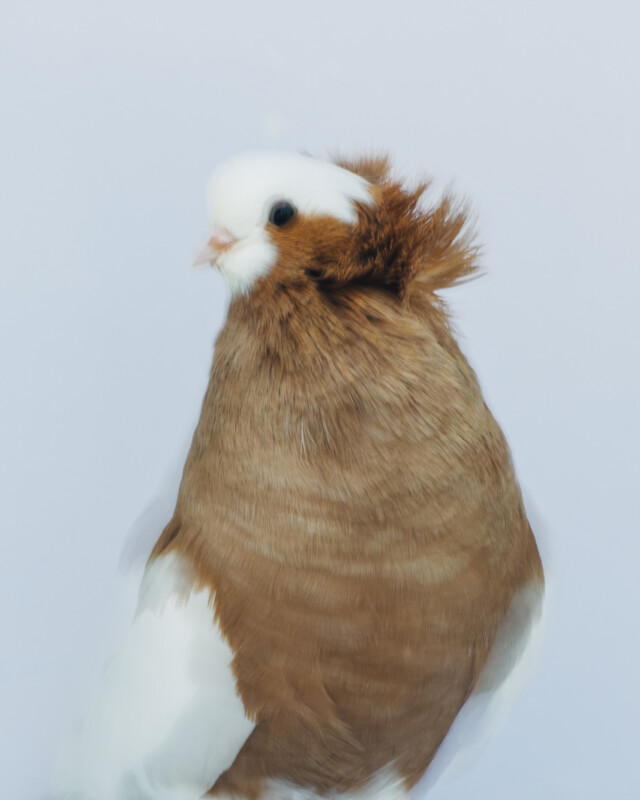
Burden says capturing pigeons’ portraits is not easy and — just like human subjects — they might not pose how you want them to and you have to let them go and do their own thing sometimes.
Misunderstood
What we call pigeons are actually rock doves. While doves are thought of as pure creatures, pigeons are associated with grime but they are in fact the same creature.
The BBC security correspondent and author of The Secret Pigeon Service Gordon Corera says pigeons’ unusual trait is that they are very friendly with people.
“They are intrinsically happy in human environments. They’re not scared of us you don’t need to cage them they will come and eat out of your hand. That means they are easy to domesticate,” he tells The Rest is History podcast.
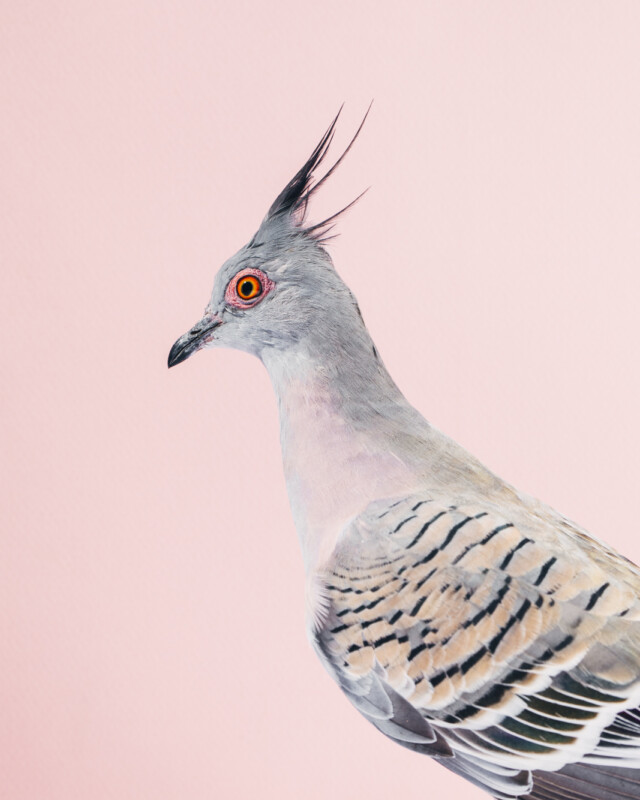

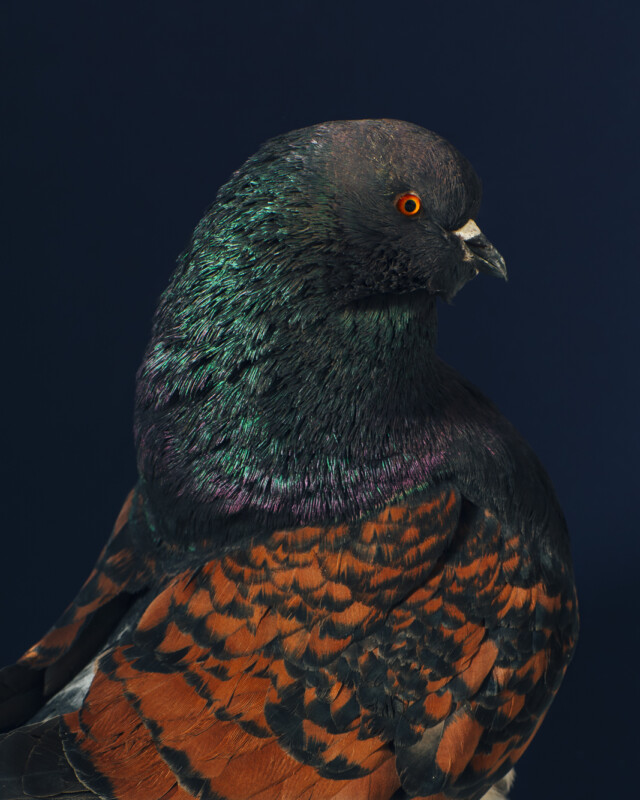
Corera says that from the very early days of history, they have been a companion to humans and also possess a superpower that we exploit — the pigeons’ homing ability. The amazing birds can be taken hundreds of miles from where it lives and simply fly back home from a location it has never been to before and scientists don’t fully understand how they do it.
“People seem to quite like them,” says Burden about his photos. “They’re often surprised that pigeons could be attractive, or that they come in such a variety of shapes, sizes, and colors.
“I think the formality of the photographic approach also contrasts the humble subject matter in a way that many find appealing and a little bit humorous.”
Perhaps in time, humans will come to love the unassuming pigeon again once more, just as our ancestors did.
More of Burden’s work can be found on his website and Instagram.
Recommended Videos
 Rare Animal Scurries Past Hidden Camera — And Scientists Are Amazed117 views
Rare Animal Scurries Past Hidden Camera — And Scientists Are Amazed117 views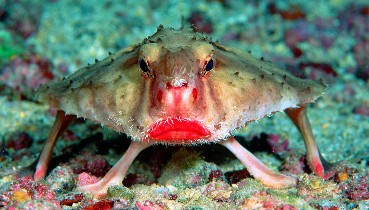 The Verge Review of Animals: the red-lipped batfish6107 views
The Verge Review of Animals: the red-lipped batfish6107 views-
Advertisements
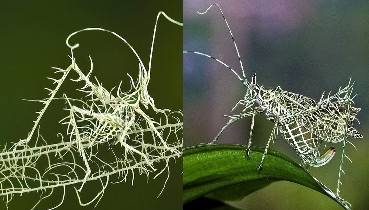 Behold, the Lichen Katydid, Markia hystrix, a fascinating creature hailing from the lush landscapes of Central and South America. 646 views
Behold, the Lichen Katydid, Markia hystrix, a fascinating creature hailing from the lush landscapes of Central and South America. 646 views 54 The Most Beautiful Abandoned Places in the World6674 views
54 The Most Beautiful Abandoned Places in the World6674 views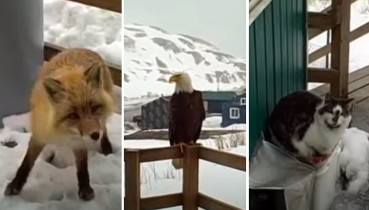 Woman Captured A Bald Eagle, A Cat, And A Wild Fox On Her Porch In Alaska92 views
Woman Captured A Bald Eagle, A Cat, And A Wild Fox On Her Porch In Alaska92 views 45 People Who Had A Funny Bad Day2063 views
45 People Who Had A Funny Bad Day2063 views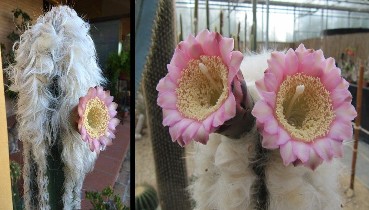 Pilosocereus leucocephalus (Old man cactus).278 views
Pilosocereus leucocephalus (Old man cactus).278 views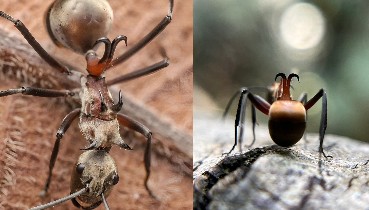 Fishhook Ants Are Capable of Cutting Through Skin and Getting Lodged Into the Throat of Would-Be Predators170 views
Fishhook Ants Are Capable of Cutting Through Skin and Getting Lodged Into the Throat of Would-Be Predators170 views



